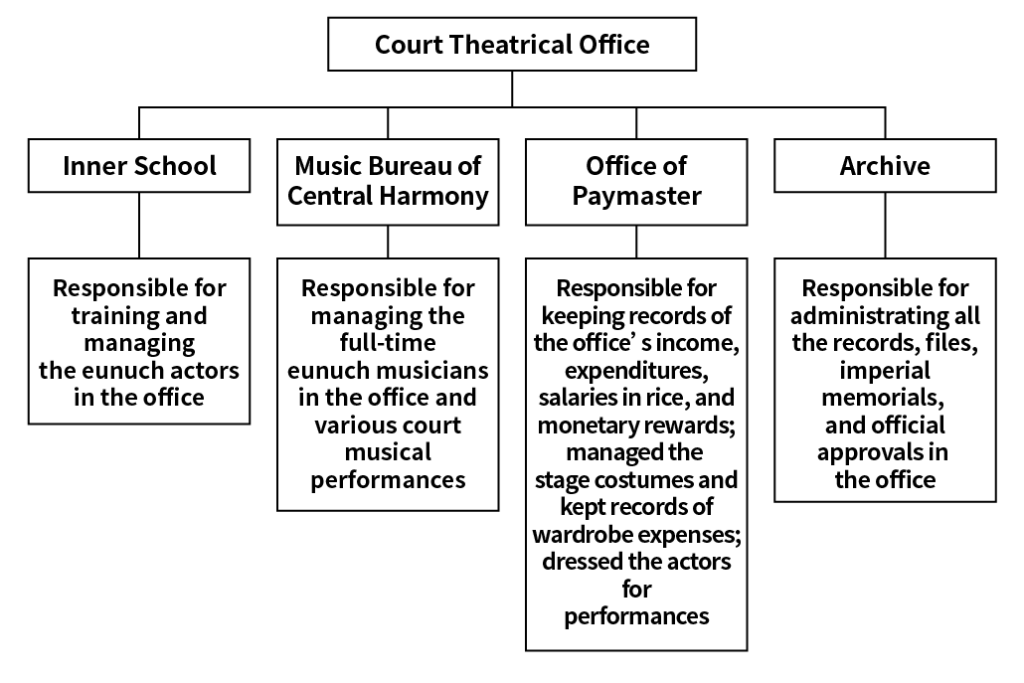The emperors of the Qing dynasty enjoyed watching theatre performances just as much as modern people do. The imperial theatre troupe, known as the Court Theatrical Office, was in charge of theatrical performances for the Qing court and was under the Imperial Household Department’s jurisdiction. During the Kangxi period, the Southern Residence and the Mountain Prospect were established to administrate theatre performances. In 1827, the Southern Residence was reorganised as the Court Theatrical Office, which continued operations until the end of the Qing dynasty. Performances were mainly undertaken by eunuchs; the leaders selected clever and good-looking candidates from the young eunuchs and trained them in the art of Chinese opera. After 1860, a number of outstanding artists from private troupes were also granted special permission to perform in the palace. In its heyday, the Court Theatrical Office employed over 1,400 people, but as the Qing dynasty started to lose power, many artists were dismissed and had to seek employment in the private sector.
Organisational chart for the Court Theatrical Office
The Commander of the Court Theatrical Office was selected personally by the Emperor to exercise command over all branches of the Office and take charge of the day-to-day operations. The Office had four branches as follows:



